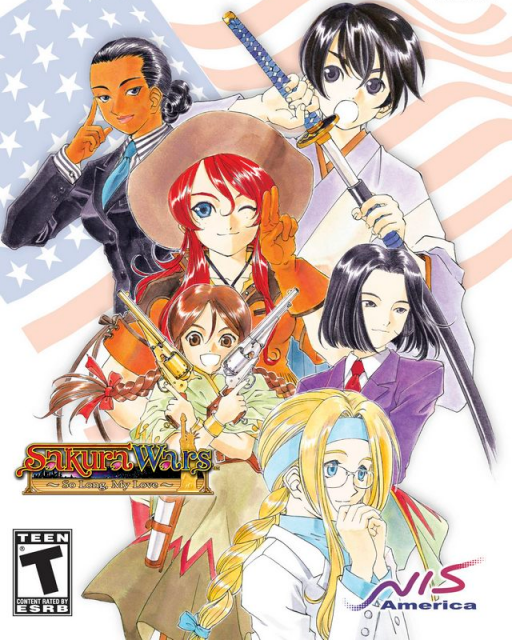An engaging visual novel/strategy game which stumbles with its change of setting
The Sakura Wars franchise is one that has, for most of the series run, been generally inaccessible for English speaking players. Yeah, we’ve had the anime adaptations of some of the games as TV shows, OVAs, and occasionally movies, but that’s pretty much been it. Finally, in 2001, the US received its first Sakura Wars game, Sakura Wars: So Long My Love, which was the first new game in the series on the PS2, and which also introduced a new group of characters working out of New York City.
So, a quick explanation of the fundamental premise of the Sakura Wars series is in order. The games are set in an alternate 1920s and 30s, where instead of having a First World War, there was a global war against a demonic incursion, rebuffed by Warriors of Justice in steam-powered mechs with psychic abilities. The demons were rebuffed, and now various countries, in their major cities, have set up various groups to fight off demonic incursions – with the front of these groups being theatrical troupes lead almost entirely by women – as the first game’s Combat Revue was heavily modeled after the Takarazuka Revue.
The structure of the games is something of a visual novel with action sequences, with each chapter having tactical combat sequences, like with Final Fantasy Tactics. The catch being that you don’t level up your party by killing enemies in the combat sequences. Instead, you strengthen your party by building up a stronger rapport with the other members of the combat revue.
You do this in the usual visual novel fashion – by picking options from dialog trees, with the catch being that the menus are timed, and the game accounts for you not picking an option at all. This game also adds some QTE sequences, where the player is also required to move the analog sticks along with commands on-screen to replicate performing certain tasks (from making coffee to being in a sword fight).
These make the game a lot more dynamic than other visual novels like Utawarerumono. The game already had branching narrative paths, related to which member of the Combat Revue your protagonist is romantically interested in, which promotes replaying the game. However, having branching dialog options does give you a lot more room to experiment with subsequent playthroughs.
As mentioned before, with So Long, My Love, the setting is moved from Tokyo to New York City, while keeping the time of the setting in the window of the 1930s. Now, from earlier works in the series, it’s clear that the developers are definitely interested in the aesthetic of the 1920s and 30s – complete with keeping the most recent game in the Taisho era for its timeline, in spite of being moved to the 1940s.
That said, it’s also clear that the developers of the game just don’t get the period they chose to set it – at least as far as the US is concerned. There’s a plotline where an antagonist is trying to gentrify Harlem, which means well (gentrification is clearly depicted as bad), but is executed poorly – particularly when it comes to trying to depict a majority-minority community.
The story also tries, really tries, to have a more ethnically diverse cast to reflect the more ethnically diverse backdrop of the story – but it still consistently stumbles in ways that could have been avoidable. Like, it’s clear that the people working on the game didn’t know any black people to run the character design of the African-American nun in the game against, so that person could let them know that she looks like Aunt Jemima in a nun’s habit.
Similarly, there are some blanket statements about some of these neighborhoods as a group that feels off – they’re meant to be positive stereotypes, but they’re still stereotypes nonetheless. It’d be like if someone took the title song from In The Heights, and based their depiction of that neighborhood entirely based on that song and musical number.
I’m glad I played the game, and I’m also glad that the series is back, but still, this is a game that has aged poorly in more than a few respects, and probably even more so in ways that I didn’t catch, so I recommend you go into this game aware that you’re going to hit moments in this game where you’re going to wince and cringe for reasons that the developers did not intend or expect, but which they could have avoided had they basically had some form of a sensitivity reader.
(This game review originally appeared on my blog)
